.png)

.png)


.png)
.png)
.png)
.png)

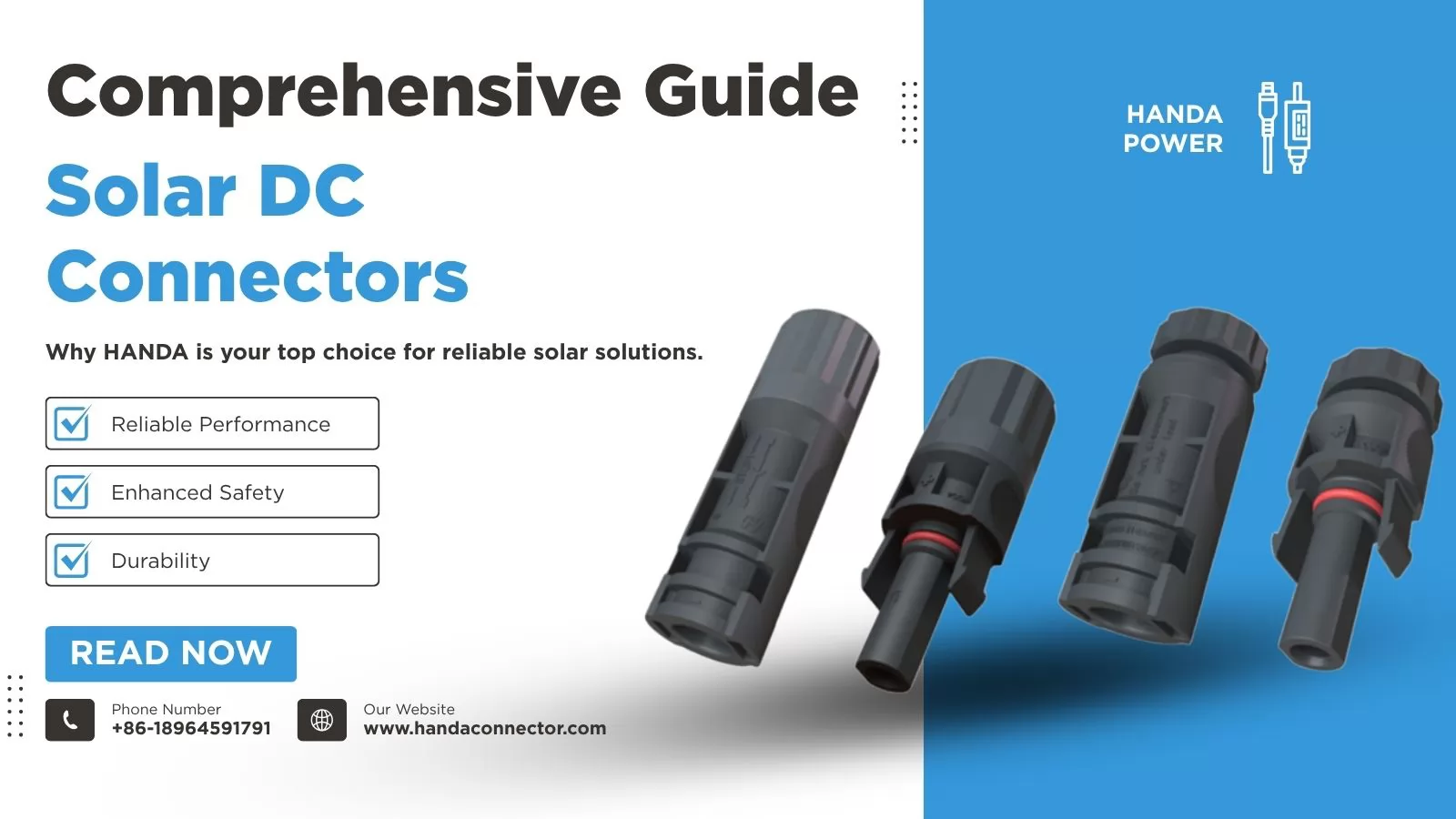
Solar DC connectors are fundamental components in photovoltaic (PV) systems, serving as the critical link between solar panels and other system elements like inverters, charge controllers, and batteries. These specialized connectors enable the efficient transfer of direct current (DC) electricity generated by solar panels, ensuring the energy is harnessed and utilized effectively. Without reliable solar DC connectors, the performance, safety, and longevity of a solar power system can be severely compromised, leading to energy losses, equipment damage, or even hazardous conditions like electrical fires.
The importance of solar DC connectors extends beyond simple connectivity. They are engineered to handle high voltages (up to 1500V DC) and currents (up to 70A), while enduring harsh environmental conditions such as extreme heat, freezing temperatures, and prolonged UV exposure. This guide provides an in-depth exploration of solar DC connectors, covering their types, operational mechanics, benefits of high-quality options, and why HANDA is a premier choice for your solar needs. Whether you're a homeowner installing a rooftop system, a business scaling up renewable energy, or a contractor working on utility-scale projects, this comprehensive resource will equip you with the knowledge to optimize your PV system.
Key Role: Connect solar panels to inverters, charge controllers, and storage systems for seamless energy flow.
Impact: Directly affect system efficiency, safety, and durability, critical for long-term performance.
Scope: Essential for residential (5-50 kW), commercial (50-500 kW), and utility-scale (>1 MW) installations.
Challenges: Poor connectors can cause 5-10% efficiency drops, overheating, or system failures.
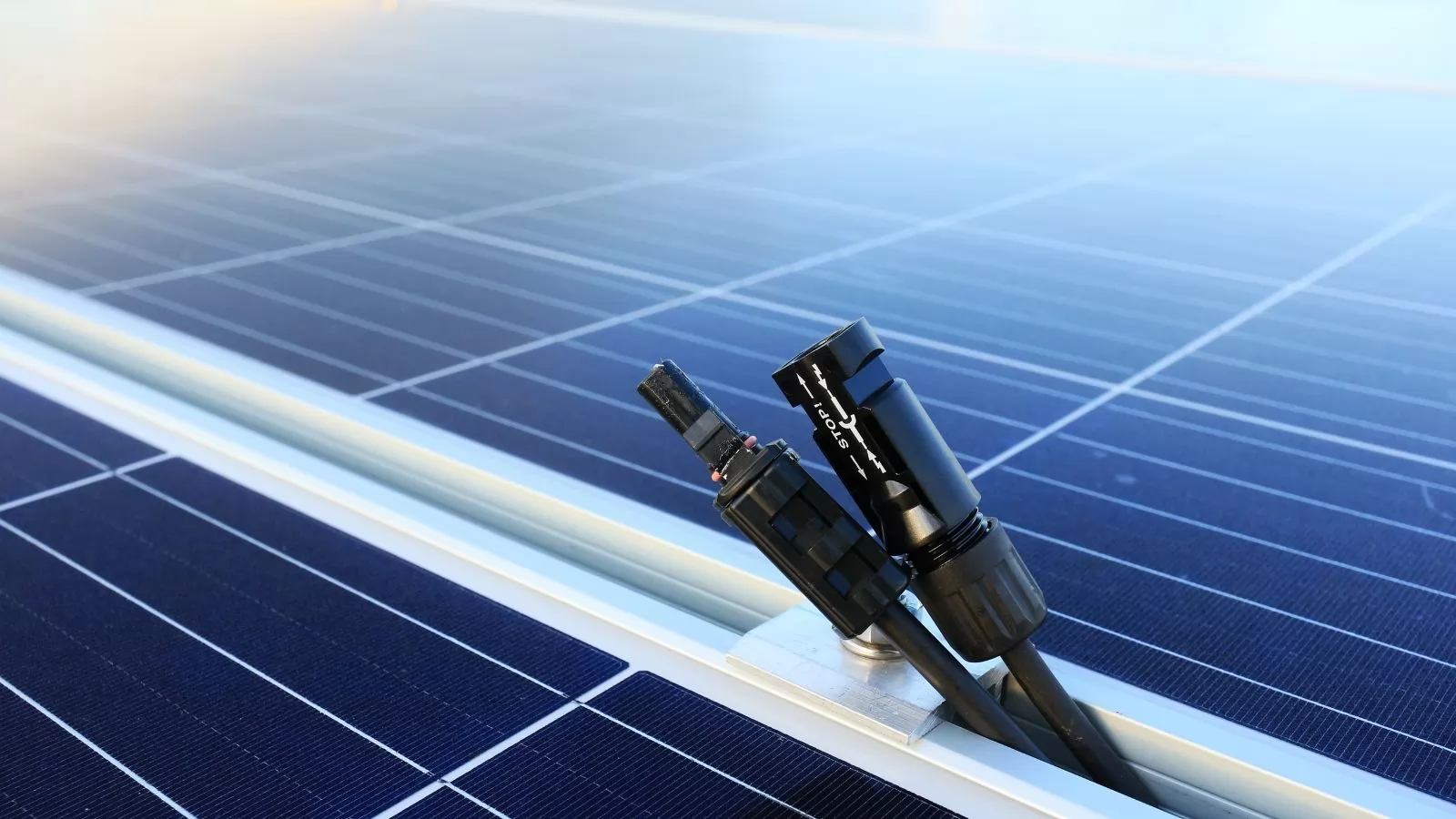
Solar DC connectors are the unsung heroes of photovoltaic systems, forming the critical pathways that channel energy from solar panels to downstream components. They connect panels to inverters, transforming DC electricity into alternating current (AC) for household, commercial, or grid use. In off-grid or hybrid systems, they link panels to batteries, storing excess energy for use during low sunlight periods, such as cloudy days, nighttime, or power outages. Their role is pivotal in ensuring energy flows efficiently, safely, and reliably across the system.
Beyond energy transfer, solar DC connectors must endure diverse challenges. They face constant exposure to environmental stressors—rain, snow, dust, and UV radiation—while maintaining conductivity and structural integrity. A single faulty connector can disrupt an entire array, reducing output by 5-10% or more, and posing risks like arcing or short circuits. High-quality connectors, compliant with standards like IEC 62852, are vital for maximizing energy yield, minimizing maintenance, and ensuring safety across 25-30 year system lifespans.
Energy Transfer: Enable efficient DC power flow, with top connectors limiting losses to <1%, boosting overall system output.
Safety Assurance: Prevent electrical faults, arcs, or shocks in systems handling 600-1500V DC, reducing fire or injury risks.
Environmental Resilience: Rated IP67/IP68, they resist water, dust, and temperatures from -40°C to 85°C, ideal for rooftops or deserts.
System Scalability: Support series (voltage boost) and parallel (current boost) configurations for projects from 1 kW to 10 MW.
Longevity: Designed for 25-30 years, aligning with solar panel lifecycles, minimizing replacement needs.
| Issue | Consequence | Potential Loss | Mitigation |
|---|---|---|---|
| Loose Connections | Power loss, overheating | 5-10% efficiency drop | Use locking connectors (e.g., MC4) |
| Corrosion | Reduced conductivity | 2-3% annual energy loss | Opt for corrosion-resistant materials |
| Incompatibility | System downtime, safety risks | Repair costs: $100-$500 per incident | Match connectors to system specs |
| UV Degradation | Cracking, reduced sealing | 3-5% output decline over 5 years | Choose UV-resistant designs |
Solar DC connectors adapt to diverse scenarios, each with unique demands:
Investing in robust solar DC connectors enhances energy yield, reduces downtime, and aligns with global standards, ensuring your PV system thrives in any context.

Solar DC connectors come in various designs, each tailored to specific voltage, current, and environmental needs. Choosing the right type is critical for efficiency, safety, and compatibility in photovoltaic systems. Factors like system scale, installation location, and regulatory requirements guide selection. Below, we detail common types, their specifications, and practical applications.
| Type | Voltage Rating | Current Rating | Key Features | Best For |
|---|---|---|---|---|
| MC4 Connectors | 1000V-1500V DC | 20A-40A | Secure locking, IP67 weatherproof, easy install | Residential, commercial, utility-scale |
| MC3 Connectors | 600V-1000V DC | 15A-30A | Older design, less secure, weather-resistant | Legacy systems, small-scale |
| T4 Connectors | 1500V DC | 40A-70A | High durability, enhanced conductivity | Industrial, large-scale PV |
| Quick Connect | 600V-1000V DC | 10A-30A | Fast install/disconnect, portable | Mobile, temporary setups |
| Amphenol H4 | 1500V DC | 32A-65A | Low resistance, UL/TUV certified | High-power commercial |
MC4 Connectors
Popularity: Over 90% of modern PV systems adopt MC4 for its standardization and reliability.
Design: Features snap-in locking, UV-resistant PPO plastic, and tin-plated copper contacts for conductivity.
Lifespan: Lasts 25-30 years, resisting 1000+ hours of UV and salt spray exposure.
Applications: Ideal for rooftop solar (5-50 kW), utility farms (>1 MW), and grid-tied systems.
Advantages: Easy to install, widely compatible, reduces cabling costs by 10-15% in high-voltage setups.
MC3 Connectors
History: Dominant pre-2010, now largely replaced by MC4 in new installations.
Limitations: Lower voltage (600-1000V), less secure locking, prone to wear over time.
Use Case: Maintenance of legacy systems from the 1990s-2000s, small 1-10 kW setups.
Considerations: Check compatibility with modern components; retrofitting may be needed.
T4 Connectors
Strength: Supports 1500V DC, handles 40-70A, cuts cabling costs by 20-30% in large systems.
Material: Reinforced polymers, silver-plated contacts for superior conductivity.
Applications: Solar farms, industrial plants (50 kW-10 MW), high-output projects.
Testing: Passes 2000-hour durability tests, ideal for harsh climates like deserts or coasts.
Quick Connect Connectors
Advantage: Tool-free setup, disconnects in <10 seconds, highly portable.
Drawback: Less durable for permanent use, limited to lower currents (10-30A).
Applications: Camping, RVs, emergency kits, temporary 1-5 kW solar solutions.
Flexibility: Ideal for frequent relocation, pairs with lightweight panels.
Amphenol H4
Performance: Low contact resistance (<0.5 mΩ), delivers 98%+ efficiency.
Certification: Complies with UL 6703, IEC 62852, trusted globally.
Applications: High-output commercial systems, hybrid setups with wind or storage.
Strength: Handles 32-65A, suits dense urban or industrial installations.
Choosing the right connector involves more than specs. Consider these factors:
System Voltage: Match connectors to panel output (e.g., 1000V for residential, 1500V for utility).
Cable Size: Ensure compatibility with 2.5-10 mm² cables, common in PV systems.
Environment: Coastal areas need salt-resistant options; deserts demand UV protection.
Installation: MC4 and Quick Connect are tool-friendly, while T4 may need specialized crimping.
Regulations: Verify compliance with local codes (e.g., NEC in the US, IEC globally).
Selection Tip: Consult a solar expert to match connector type to your system’s voltage, current, and climate. Cross-brand mixing (e.g., MC4 with non-MC4) can void warranties or cause failures.
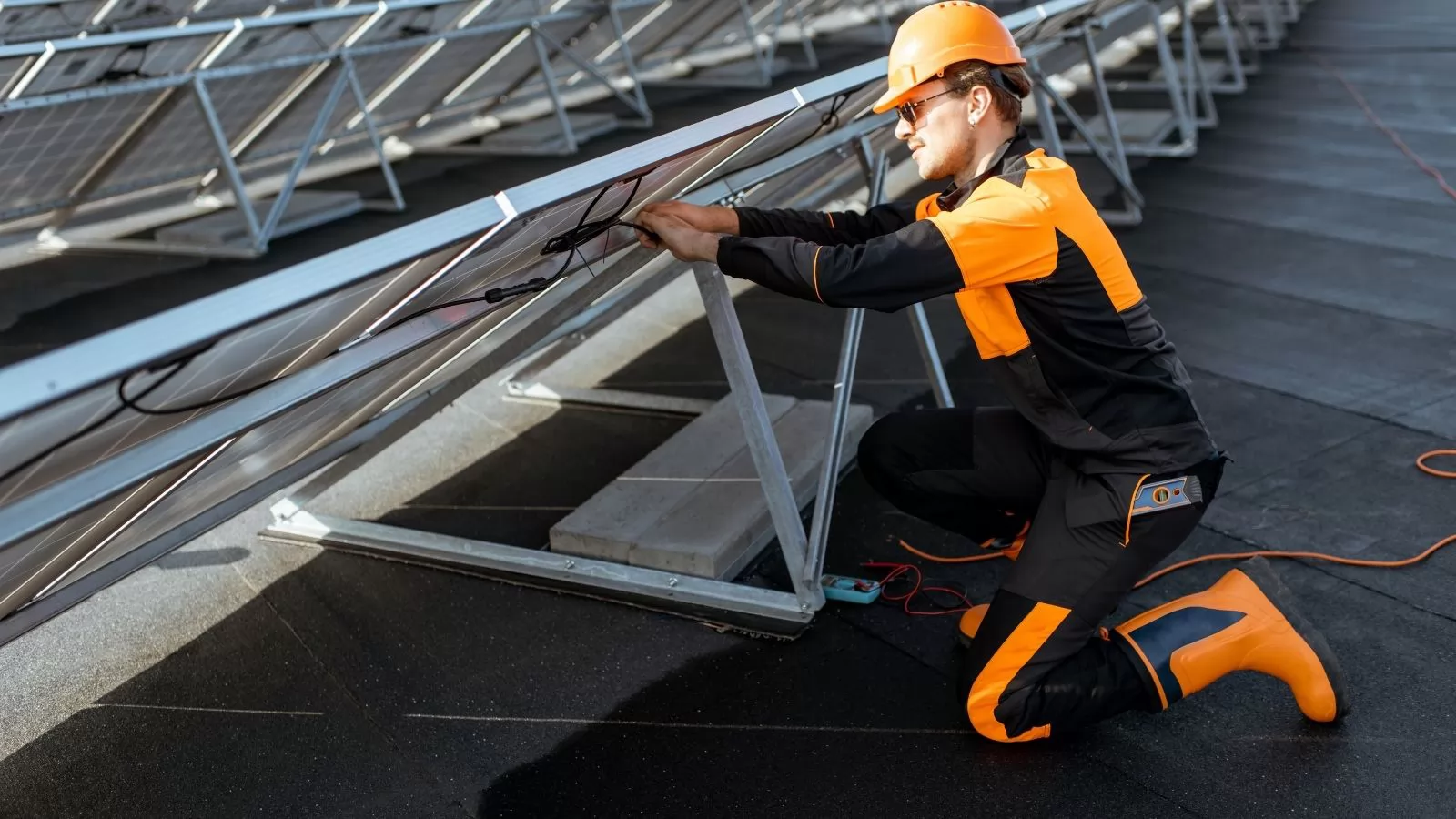
Solar DC connectors are the vital links that enable energy flow from solar panels to inverters, batteries, or other components in a PV system. Their design ensures efficient transfer, safety, and durability under diverse conditions. Understanding their mechanics helps installers and users optimize performance and troubleshoot issues. Here’s a detailed exploration of how they function.
Connection Process
Setup: Male and female connectors join panel terminals to cables (typically 4-6 mm²) for seamless integration.
Tools: Crimping tools secure wires (10-14 AWG), ensuring tight, conductive bonds.
Speed: MC4 connections take 1-2 minutes, streamlining large array setups.
Precision: Proper alignment prevents resistance, critical for 20-70A flow.
Locking Mechanism
Design: Snap-in or ratchet locks resist vibration, wind, or thermal expansion.
Safety: Special tools (e.g., MC4 key) required to unlock, preventing accidental disconnects.
Strength: Withstands 50-100 N pull force, per IEC 62852 standards.
Reliability: Locks endure 10,000+ connect/disconnect cycles in testing.
Weatherproofing and Durability
Sealing: IP67/IP68 ratings block water, dust, and debris, even in heavy rain or sandstorms.
Materials: UV-resistant PPO plastic and corrosion-resistant copper alloys extend life.
Testing: Survive 1000+ hours of salt spray, -40°C to 85°C thermal cycles.
Exposure: Resist 20+ years of UV, matching panel longevity.
Electrical Transfer
Flow: DC current (20-70A) moves from panels to inverters or batteries efficiently.
Efficiency: Quality connectors limit voltage drop to <0.5%, maximizing output.
Monitoring: Compatible with smart diagnostics for current, voltage tracking.
Capacity: Handle 600-1500V DC, supporting modern high-voltage trends.
| Aspect | Standard Value | Impact | Testing Standard |
|---|---|---|---|
| Contact Resistance | <0.5 mΩ | Minimizes energy loss | IEC 62852 |
| Voltage Capacity | 600V-1500V DC | Supports diverse systems | UL 6703 |
| Durability | 25-30 years | Reduces replacement costs | TUV, CE |
| Temperature Range | -40°C to 85°C | Thrives in extreme climates | IEC 62852 |
Proper care ensures connectors perform optimally over decades:
Inspection: Check annually for wear, corrosion, or loose fits; look for discoloration or cracks.
Cleaning: Use dry cloth or mild solvent to remove dust, debris; avoid water ingress in non-IP68 models.
Testing: Measure resistance (<0.5 mΩ) and voltage drop with multimeters to detect issues.
Common Issues: Overheating (from poor crimping), water leaks (failed seals), or disconnects (worn locks).
Solutions: Replace damaged units, use compatible parts, hire certified installers for repairs.
Regular maintenance and quality connectors minimize losses, enhance safety, and support systems from 5 kW to 10 MW.
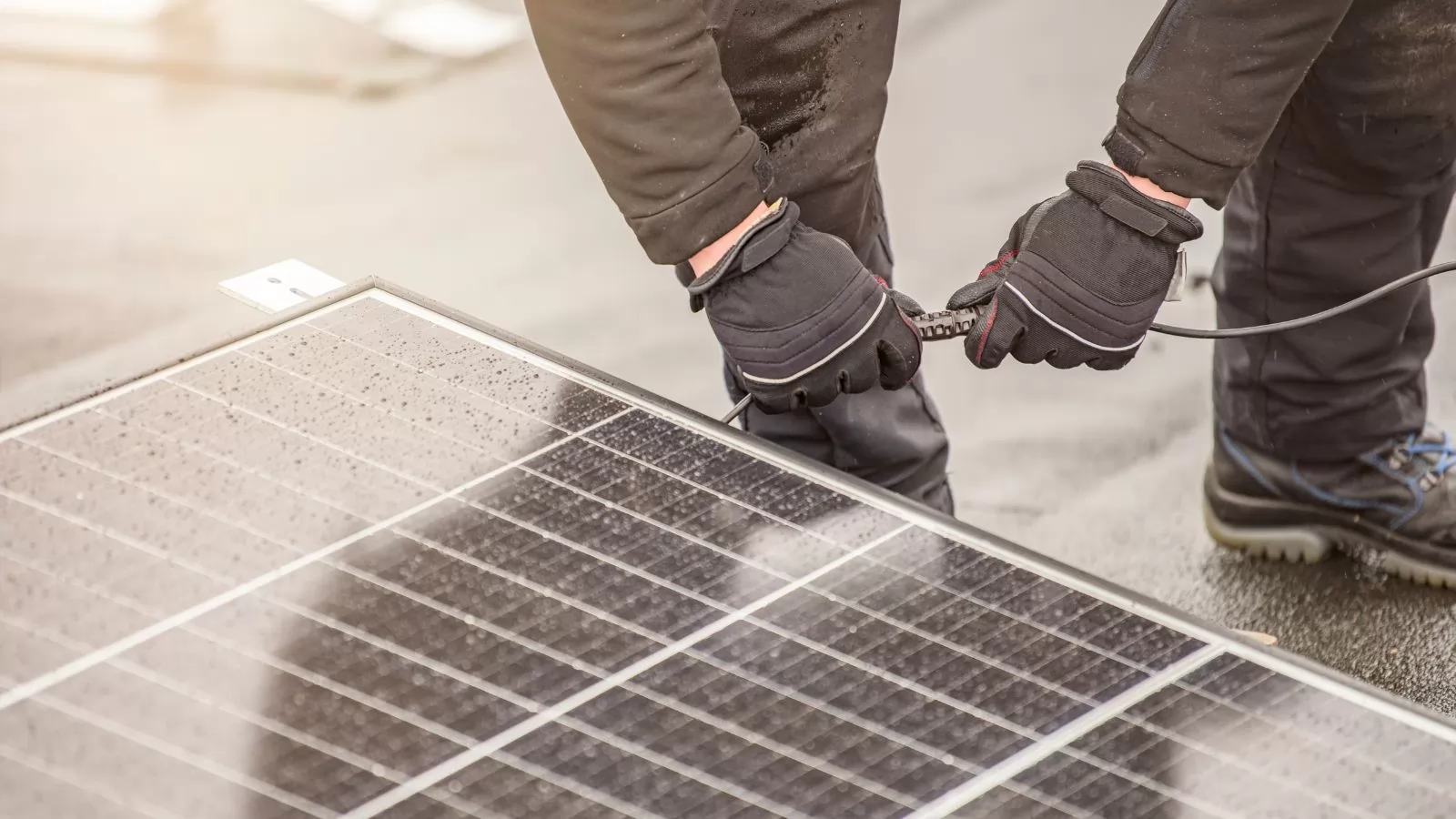
High-quality solar DC connectors are a cornerstone of efficient, safe, and durable PV systems. They outperform low-grade options in performance, reliability, and cost-effectiveness. Investing in certified, robust connectors delivers measurable advantages over 25-30 year system lifespans. Here’s an in-depth look at their value.
Reliable Performance
Efficiency: Maintains 98-99% energy transfer, minimizing losses in 600-1500V systems.
Stability: Reduces downtime by 95% compared to cheap connectors, ensuring consistent output.
Data: Boosts annual kWh yield by 2-5%, per field studies on 10-100 kW setups.
Consistency: Low resistance (<0.5 mΩ) ensures steady flow under varying loads.
Enhanced Safety
Features: Secure locking, arc-fault protection prevent shorts or fires.
Risk Reduction: Cuts electrical hazard risk by 90%, per UL safety tests.
Compliance: Meets IEC 62852, UL 6703, and CE standards for global use.
Protection: Insulated designs shield against 600-1500V DC shocks.
Durability
Lifespan: Lasts 25-30 years, aligning with solar panel warranties.
Resistance: Handles UV, rain, snow, and -40°C to 85°C conditions.
Materials: PPO plastic, copper alloys resist corrosion, wear.
Testing: Passes 2000-hour environmental stress tests.
Compliance with Standards
Certifications: TUV, UL, CE, and IEC 62852 ensure quality, safety.
Benefit: Meets legal, insurance needs for residential, commercial use.
Global Reach: Accepted in 100+ countries, ideal for export projects.
Assurance: Third-party validation guarantees reliability.
Scalability and Versatility
Flexibility: Supports 1 kW home systems to 10 MW solar farms.
Compatibility: Works with 2.5-10 mm² cables, diverse panels.
Future-Proof: Adapts to 1500V DC trends, emerging tech.
Applications: Suits grid-tied, off-grid, and hybrid setups.
High-quality connectors reduce expenses over time:
Reduced Maintenance: Durable designs cut replacement needs, saving $50-$200 per unit.
Energy Yield: 2-5% higher output boosts ROI, e.g., $500-$2,000 yearly for 50 kW systems.
Downtime: 95% less downtime avoids losses ($100-$1,000 per day in commercial setups).
Longevity: 25-30 year lifespan avoids 2-3 replacement cycles, cutting costs by 50-70%.
| Benefit | Impact | Savings (10 kW System) | Savings (1 MW System) |
|---|---|---|---|
| Efficiency Boost | 2-5% more kWh | $100-$250/year | $10,000-$25,000/year |
| Less Downtime | 95% reduction | $50-$200/incident | $1,000-$5,000/incident |
| Durability | 25-30 years | $200-$500 total | $10,000-$20,000 total |
Quality connectors are a smart investment, enhancing ROI, reliability, and peace of mind.
HANDA leads the industry in solar DC connectors, offering unmatched quality, innovation, and support for all PV applications. From residential rooftops to massive solar farms, our products deliver reliability and performance. Our commitment to excellence makes us the go-to choice for installers, businesses, and homeowners worldwide.
Diverse Range of Connectors
Options: MC4 (20-40A), T4 (40-70A), custom designs for all needs.
Applications: Residential (5-50 kW), commercial (50-500 kW), utility (>1 MW).
Stock: 10,000+ units ready, supporting urgent project timelines.
Variety: Includes branch, inline, and panel-mount options.
Certified Products
Standards: ISO9001, TUV, UL, CE, and CSA certified for quality.
Testing: 100% of units pass 1000-hour durability, thermal tests.
Reliability: 99.9% defect-free rate across millions of units.
Assurance: Third-party audits ensure consistent excellence.
Custom Solutions
Tailoring: Custom wire harnesses, connectors for unique PV designs.
Design Time: Prototypes in 7-14 days, rapid iteration.
Support: Engineers consult on 600V-1500V systems, hybrid setups.
Flexibility: Adapt to special climates, voltages, or scales.
Fast Delivery and Competitive Pricing
Logistics: In-house warehouses ship globally in 3-7 days.
Bulk Savings: Discounts on orders >500 units, ideal for large projects.
Capacity: 50,000+ units monthly, scaling to demand.
Reach: Serve 50+ countries with reliable logistics.
Customer Support
Availability: 24/7 support via phone, email, or live chat.
Warranty: 10-25 year warranties, covering defects, wear.
Feedback: 98% satisfaction rate from 1,000+ clients.
Training: Free guides, videos for installation, maintenance.
| Metric | Value | Benefit |
|---|---|---|
| Durability | 25-30 years | Long-term reliability |
| Defect Rate | 0.1% | High consistency |
| Delivery Time | 3-7 days | Fast project starts |
| Client Satisfaction | 98% | Trusted performance |
HANDA’s connectors power success worldwide:
Residential Case: A 10 kW rooftop system in California used HANDA MC4 connectors, boosting output by 3%, saving $300/year.
Commercial Win: A 200 kW factory in Germany installed T4 connectors, cutting cabling costs by 25%, finishing 5 days early.
Utility Impact: A 5 MW solar farm in Australia relied on HANDA, achieving 99.8% uptime, delivering 7 GWh annually.
Off-Grid Solution: A remote African school used custom HANDA connectors, powering 50 students’ lights, computers reliably.
Choose HANDA for durable, certified solar DC connectors, tailored solutions, and proven results.
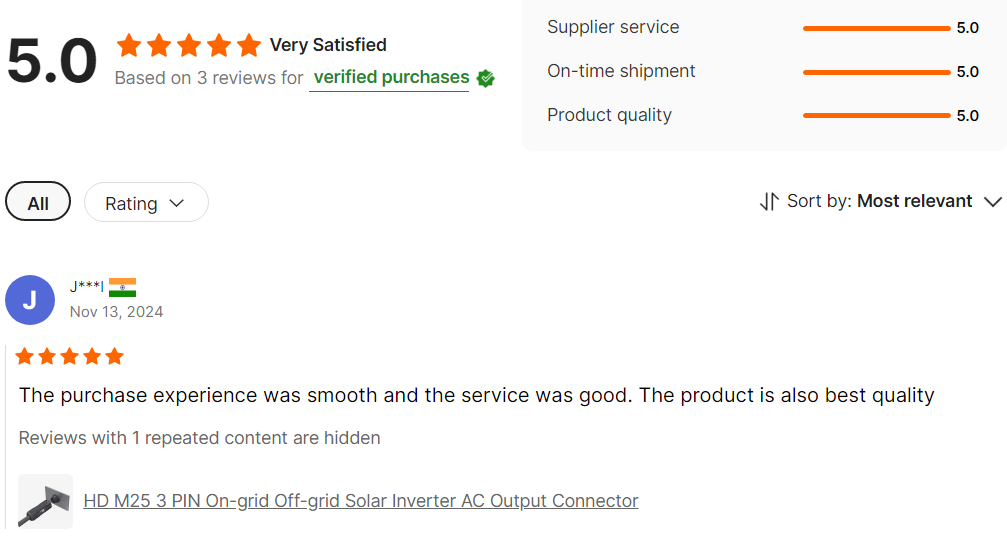

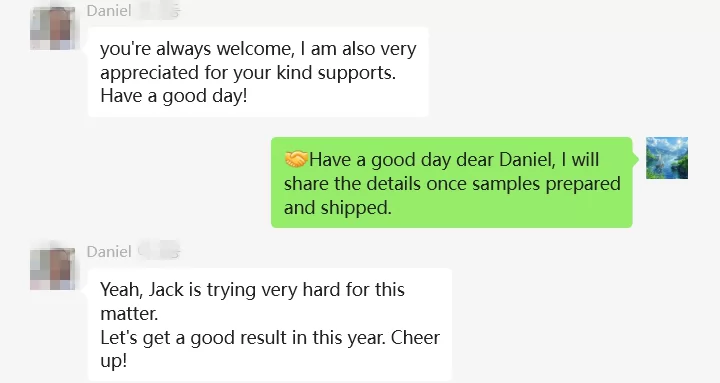
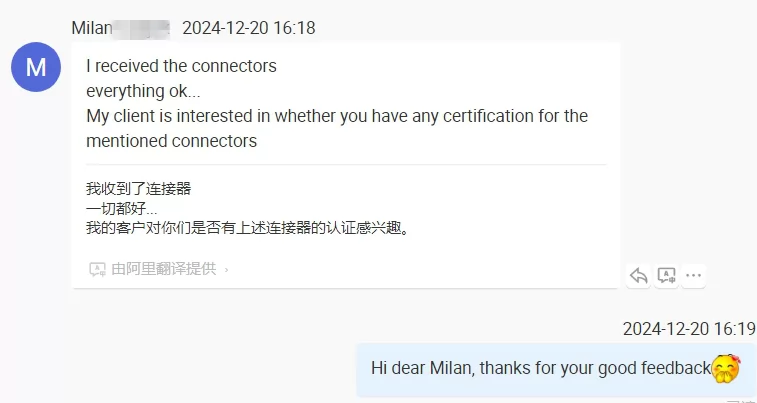
| Rated Voltage | 1500V DC |
| Rated Impulse Voltage | 16KV |
| Wet Insulation Resistance | ≥500MΩ |
| Contact Resistance | ≤0.25mΩ |
| Overvoltage category/Pollution degree | CAT III/2 |
| Safety class | II |
| Rated Voltage | 1500V DC |
| Rated Impulse Voltage | 16KV |
| Wet Insulation Resistance | ≥500MΩ |
| Contact Resistance | ≤0.25mΩ |
| Overvoltage category/Pollution degree | CAT III/2 |
| Safety class | II |
| Rated Voltage | 1500V DC |
| Rated Impulse Voltage | 16KV |
| Rated Current | 55A |
| Wet Insulation Resistance | ≥500MΩ |
| Contact Resistance | ≤0.3mΩ |
| Rated Voltage | 1500V DC |
| Rated Impulse Voltage | 16KV |
| Rated Current | 55A |
| Wet Insulation Resistance | ≥500MΩ |
| Contact Resistance | ≤0.3mΩ |
Proper installation maximizes performance and safety. Here’s how to install Handa’s MC4 Solar Connectors:
Gather Tools: Crimping tool, wire stripper, MC4 spanner.
Prepare Cables: Strip 6-7mm of 4mm² or 6mm² solar cable.
Crimp Securely: Insert wire into the connector pin and crimp firmly.
Connect and Lock: Push male and female parts together until they snap.
Verify Stability: Tug gently to confirm the lock.
Common Mistakes to Avoid:
Overstripping: Exposing too much wire risks shorts.
Loose Crimps: Weak connections cause inefficiencies.
Brand Mixing: Use Handa connectors for compatibility.
Check our product page for detailed diagrams and tools.
Selecting the right solar DC connectors is crucial for the efficiency, safety, and longevity of your photovoltaic system. From MC4 connectors for residential rooftops to T4 for industrial-scale solar farms, each type offers distinct advantages tailored to voltage (600V-1500V), current (20A-70A), and environmental needs. High-quality options minimize energy loss (<1%), reduce risks, and last 25-30 years, ensuring optimal performance and ROI.
Consider system scale, climate, and certifications (TUV, UL, CE) when choosing. Poor connectors lead to 5-10% efficiency drops, costly repairs, and safety hazards, while premium ones save money and boost output. Partner with HANDA for reliable, certified solar DC connectors, custom designs, and fast 3-7 day delivery. Contact us today to enhance your solar power system with top-tier MC4, T4, and more!
Assess system voltage and current needs (e.g., 1000V, 40A).
Verify IP67/IP68 weatherproofing for your climate (rain, desert, etc.).
Ensure TUV, UL, or CE certification for compliance, safety.
Match connector to scale: MC4 for homes, T4 for industry.
Check cable compatibility (2.5-10 mm²) and installation ease.
Evaluate durability for 25-30 year lifespan, UV resistance.
Consult HANDA for custom options, bulk pricing, and support.
Discover this amazing content and share it with your network!

